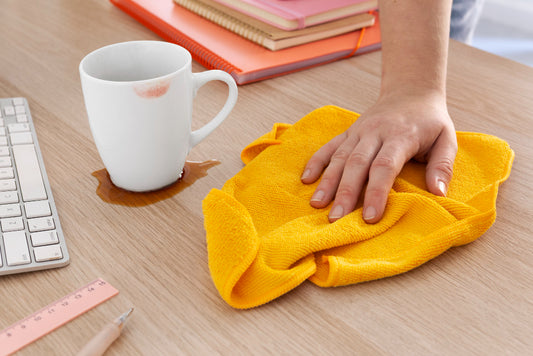In the ever-evolving world of cleaning technology, the battle between steam mops and spin mops has become a hot topic for those seeking efficient and convenient ways to keep their floors spotless. Both these innovative cleaning tools offer unique features, each with its own set of pros and cons. In this comprehensive guide, we'll delve into the advantages and drawbacks of steam mops and spin mops, helping you make an informed decision on which mop suits your cleaning needs best.
Steam Mops: The Power of Steam Cleaning
Pros:
-
Efficient Sanitization:
- One of the standout benefits of steam mops is their ability to sanitize surfaces effectively. The high temperatures produced by the steam not only lift dirt and grime but also kill many common household bacteria and germs, providing a thorough and hygienic clean.
-
Chemical-Free Cleaning:
- Steam mops operate primarily using water, eliminating the need for chemical cleaning solutions. For eco-conscious users or those with allergies, this chemical-free approach is a significant advantage.
-
Versatility Across Surfaces:
- Steam mops are versatile and can be used on a variety of floor types, including hardwood, tile, laminate, and even carpets (with certain models). The adaptability of steam mops makes them a convenient solution for households with diverse flooring.
-
Quick Drying Time:
- Steam mops leave minimal moisture behind, resulting in quicker drying times compared to traditional mops. This feature is particularly advantageous for busy households or those with pets and children who can't wait for the floors to dry completely.
Cons:
-
Initial Cost:
- Steam mops tend to have a higher upfront cost compared to traditional mops. While the initial investment might be a drawback for some, the long-term benefits, including reduced spending on cleaning solutions, can offset this initial expense.
-
Limited Water Capacity:
- Most steam mops have a relatively small water reservoir, requiring frequent refilling during extended cleaning sessions. This may interrupt your cleaning flow and add a bit of inconvenience.
-
Not Suitable for All Floors:
- While steam mops are versatile, they may not be suitable for certain floor types, such as unsealed hardwood or laminate. It's crucial to check the manufacturer's guidelines to ensure compatibility with your specific flooring.
Spin Mops: Whirling Through the Grime
Pros:
-
Ease of Use:
- Spin mops are designed for ease of use. With a simple bucket system and a foot pedal for wringing, these mops are user-friendly and require minimal effort to operate. The spinning mechanism efficiently wrings out excess water, making them lightweight during use.
-
Affordability:
- Spin mops are generally more budget-friendly than steam mops, making them an attractive option for those looking for effective cleaning without a significant initial investment.
-
Versatile Mop Heads:
- Spin mops often come with interchangeable mop heads, allowing users to switch between materials based on the cleaning needs. This versatility ensures efficient cleaning on various surfaces.
-
Extended Cleaning Reach:
- Many spin mops come with extendable handles or additional features like swivel heads, providing extended reach and making it easier to clean under furniture or in tight spaces.
Cons:
-
Limited Sanitization:
- Unlike steam mops, spin mops do not offer the same level of sanitization. While they effectively remove dirt, they might not kill bacteria and germs as effectively as steam cleaning.
-
Dependence on Cleaning Solutions:
- Spin mops often rely on cleaning solutions to enhance their effectiveness. For those looking to minimize chemical usage, this dependency might be a drawback.
-
Heavier When Wet:
- While the spinning mechanism helps in wringing out excess water, spin mop heads can become heavy when soaked, potentially causing strain on wrists and arms during extended cleaning sessions.
-
Longer Drying Times:
- Spin mops can leave more moisture on the floor compared to steam mops. This can result in longer drying times, which may be inconvenient for households with high foot traffic.
Choosing the Right Mop:
When deciding between a steam mop and a spin mop, consider your specific cleaning needs, the types of flooring in your home, and your preferences. If sanitization and chemical-free cleaning are priorities, a steam mop might be the better choice. On the other hand, if ease of use and affordability are crucial factors, a spin mop could be the ideal solution.
In the end, both steam mops and spin mops have their own set of advantages and limitations. The key is to align your choice with your household's requirements, ensuring that your cleaning routine is efficient, effective, and tailored to your preferences. Whether you're harnessing the power of steam or whirling through grime with a spin mop, the goal remains the same – a clean and inviting home for you and your family.




